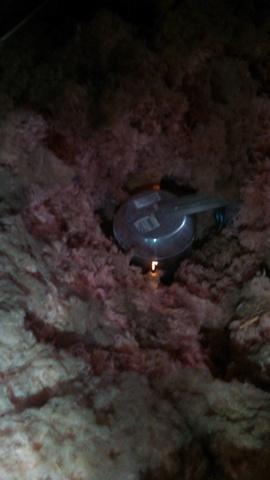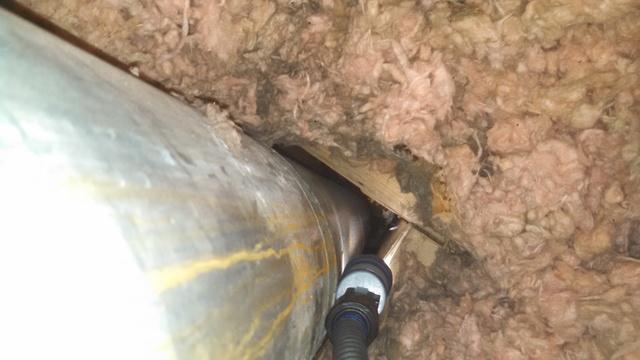Severe Ice Damming in Penfield, NY
Challenge
This home is a west-facing, 2200 square foot 2 story colonial built in 1976 in Penfield, NY. It's built on a slab, so there's no basement. The customer called concerned about severe ice damming -- there was brown ice coming out of the vents at the eave soffitts. They wanted better insulation to solve the problem -- Sounds great!
We found so much humidity in his attic that the condensation would drip off the roof nails and soak into the plywood of the roof-decking. It turns out he's had to keep replacing his roof due to moldy rotted decking. Where does all that humidity come from? It's carried by the warm air that's escaping from the house below. How? Lots and lots of (hidden) holes in his ceiling! We found can lights that let the heat through, a chimney flue that was drawing the heat up into the attic, and an attic hatch in bad need of repair, just to name a few. Lastly, just as the customer suspected, there was not enough insulation.
All this added up to ice damming. The heat they'd paid for was escaping up into the attic where it could melt the show on the roof. The melted snow would run down the roof to the gutter where it would re-freeze, creatinig a tall "dam" of ice that held liquid water against the shingles. This water found it's way into the attic where it soaked into dirty fiberglass, and then dripped out the vents, creating his brown icicles.
Somehow, during all this, the water never damaged his sheet-rock ceiling. Just insulating over the holes wouldn't do. When air flows through insulation... it stops insulating (imagine going skiing in a knit sweater).
Solution
The solution was simple:
1.) Keep the heat in the house, where it belongs by FIRST stopping the airflow, and THEN fixing the insulation.
2.) Make sure the attic is well-vented to allow excess humidity to escape.
We sealed the large gap around the flue pipe with flashing, rock-wool, and fire-caulk. This stopped the airflow and let us insulate right up to the pipe. We also sealed the leaky can lights with rock-wool "Tite-shell" covers to stop the airflow and allow us to insulate over them. We then fixed the access hatch, and sealed everything up with spray-foam. Lastly, we used eave baffles to keep the vents clear, before installing a nice thick layer of "Tru-soft" blown cellulose insulation.
The result? No more icicles. The customers also report improved comfort and lower bills -- and much less humidity in the attic.
Project Summary
Home Expert: Ben Kershner
Problem: Ice Damming
Problem: Cold Rooms
Problem: Attic Mold
Problem: High heating bills
Solution: Tite-Shell can light covers
Solution: Tru-Soft cellulose insulation
Solution: Metal "Chimney Wrap"
Solution: Repair attic hatch
Solution: Attic air-sealing






